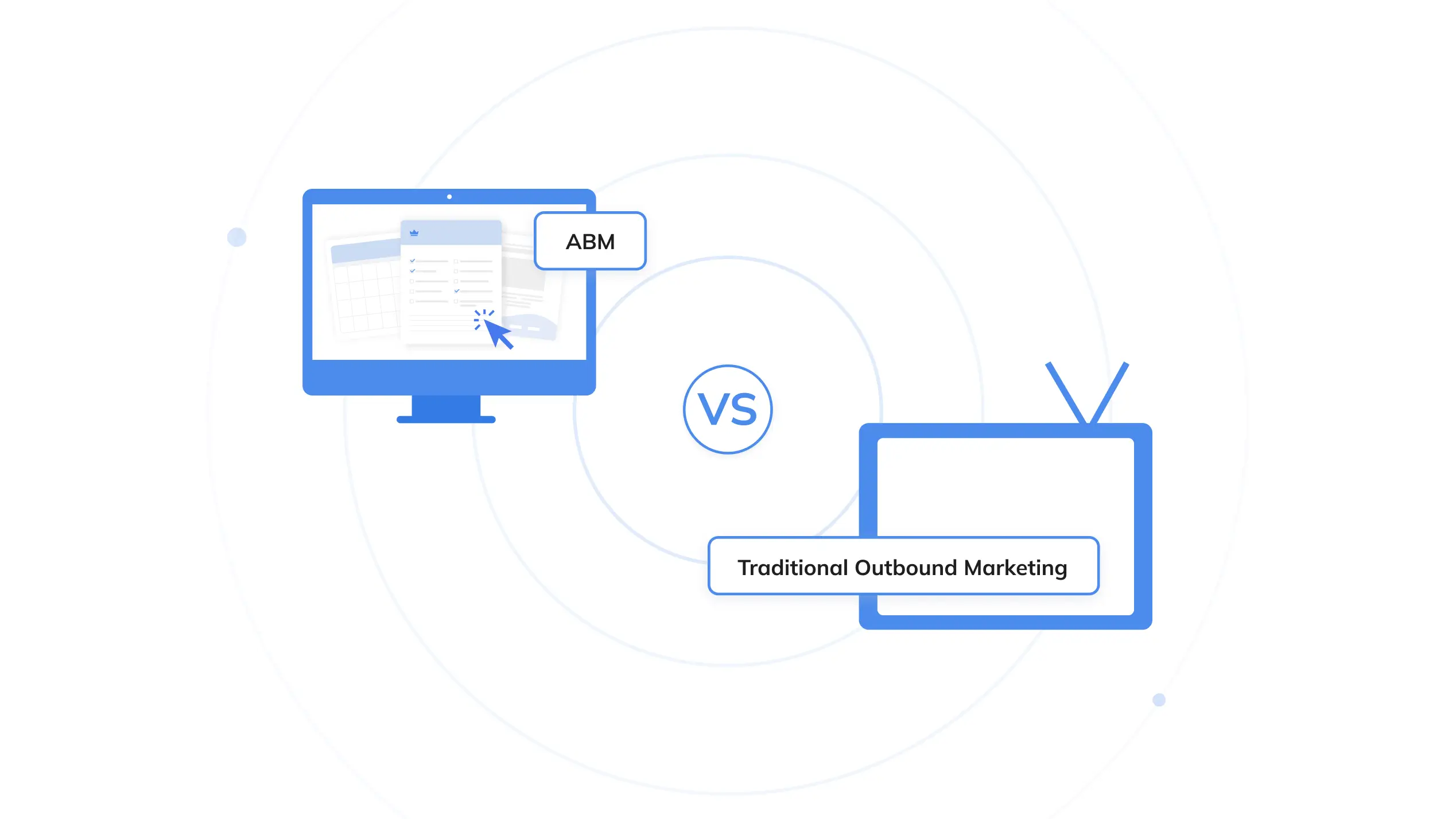Marketing strategies have evolved significantly over the years. In the early days, outbound marketing was the go-to method for businesses looking to reach potential customers. However, account-based marketing (ABM) has become an increasingly popular alternative because it enables businesses to concentrate their marketing efforts on a smaller group of high-value accounts that are more likely to convert. Companies can now send highly targeted, customized messages to selected accounts using a variety of digital channels, such as email, media platforms, and online ads, thanks to the growth of digital marketing tools.
Traditional outbound marketing involves more widespread, less personalized outreach, with the goal being to get in contact with a larger number of potential prospects in the hopes that one might interact. This can involve strategies like cold calling, direct mail, and conventional advertising, among others. Outbound marketing has the drawback that it frequently lacks personalization and relevance. Given that they haven't given their consent to be contacted, many consumers may find it intrusive and bothersome.
ABM holds a number of advantages over conventional outbound marketing, particularly for B2B SaaS companies looking to develop trust to close high-value deals. ABM enables you to concentrate your efforts on the accounts and people who are most likely to make purchases from you rather than casting a wide net and hoping to capture some fish. This not only improves your chances of success but also lowers the time and resources you must devote to your marketing campaigns. Another benefit is that it makes it possible for you to develop deeper, more meaningful connections with your target accounts. Personalizing your marketing initiatives demonstrates your understanding of your target market's demands and your commitment to assisting them in finding solutions.
What are the distinguishing traits of ABM and outbound marketing?
|
Account-Based Marketing
|
Outbound Marketing
|
|
A strategic approach to B2B marketing focused on targeted engagement with specific accounts and individuals in those organizations.
|
A broad, cold outreach approach to reach potential customers.
|
|
Requires a deep understanding of your target accounts, including their pain points, goals, and decision-making processes. This information is used to develop a tailored marketing campaign that speaks directly to the needs of your target accounts and their stakeholders.
|
It often includes interruptive tactics such as cold-calling, direct mail, and traditional advertising.
|
|
Often involves a coordinated effort across multiple teams and departments, including sales, marketing, and customer success, to ensure a consistent and relevant experience for the target account.
|
It is not as personalized as ABM and can result in lower engagement and conversion rates.
|
|
Is highly measurable, allowing you to track the success of your campaigns and make data-driven decisions about improving your efforts.
|
It can also be more expensive and less efficient than ABM, as it requires a more significant investment of time and resources to reach a wider audience.
|
4 points to identify which methodology fits best for you
As mentioned above, in many cases the targeted, efficient approach of ABM will typically be more effective for B2B SaaS companies with higher deal sizes where trust and strong prospect relationships are essential. However, for some businesses, a more traditional outbound approach may be useful when quickly targeting a large audience will be more efficient, even if those contacts and the messaging is lower quality and less targeted.
To determine which approach is better for your company, you should consider a few factors:
- Ideal Customer Profile: If you're selling to consumers (B2C) and have a lower-cost offering, traditional outbound marketing may be more effective, as it allows you to reach a large number of potential customers. However, suppose you're selling to businesses (B2B) and the high ACV and onboarding cost make for a bigger barrier to entry for your audience. In that case, account-based marketing is often a better choice as it allows you to focus your efforts on specific accounts and individuals within those accounts and give each more personalized attention.
- Product or service: The type of product or service you offer can also influence which approach is better. If your product or service is complex and requires a lot of education and explanation, ABM may be a better choice, as it allows you to build stronger relationships with your target accounts and educate them on your solution.
- Budget: ABM typically requires a higher budget than traditional outbound marketing, which involves a more tailored and personalized approach. Consider your budget and resources when deciding which approach is right for your company.
- Market maturity: If your market is already saturated with competitors, ABM may be a better choice, as it allows you to differentiate yourself from the competition and build stronger relationships with your target accounts.
Building a better outbound marketing function
Regardless of your choice, remember that when operating in either of these channels you’ll be working in a crowded market, and standing out with a differentiated strategy built around strong positioning and messaging is essential. For more on outbound and ABM, check out these articles from our blog:
